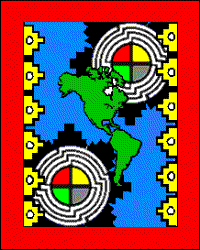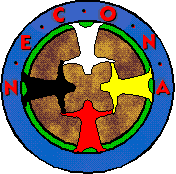| ENVIRONMENT LINKS | Indigenous | |
|
|
|
|

|

|
||||||

|
The Midwest Treaty Network is an alliance of Indian and non-Indian community groups that support the sovereign rights of Native American nations. While founded in the context of the Chippewa (Ojibwe) treaty struggle, it is concerned generally with defending and strengthening Native cultures and nationhood, protecting Mother Earth, and fighting racism and other forms of domination throughout our region. The Network has taken a stand against economic and political pressure on indigenous nations to give up their rights. |

|
The mission of the Haudenosaunee Environmental Task Force (HETF) is to assist Haudenosaunee Nations in their efforts to conserve, preserve, protect and restore their environmental, natural and cultural resources; to promote the health and survival of the sacred web of life for future generations; to support other Indigenous Nations who are working on environmental issues; and to fulfill responsibilities to the natural world as the Creator instructed without jeopardizing peace, sovereignty or treaty obligations. The leaders of the Haudenosaunee have always considered three principles when making decisions: will a decision threaten peace, the natural world or future generations. |
| The Assembly of First Nations (AFN)is the national representative/lobby organization of First Nations in Canada. There are over 630 First Nations communities in the country. The AFN Secretariat is designed to present the views of the various First Nations through their leaders in areas such as: Aboriginal and Treaty Rights, Economic Development, Education, Languages and Literacy, Health, Housing, Social Development, Justice, Taxation, Land Claims, Environment, and a whole array of issues that are of common concern which arise from time to time. |

|
The Indigenous Environmental Network (IEN) is an alliance of grassroots indigenous peoples whose mission is to protect the sacredness of Mother Earth from contamination and exploitation by strengthening, maintaining and respecting the traditional teachings and the natural laws, as well as by building sustainable communities. The Indigenous Environmental Network is not simply a combination of the Native American movement with environmental activism. IEN has popularized a new angle on Native sovereignty that includes appropriate technology and the defense of natural resources. IEN has introduced a new angle on environmentalism that includes supporting the survival of endangered cultures and putting the protection of nature in a larger social, cultural and economic context. |

|
National Environmental Coalition
of Native Americans (NECONA) goals are :
|


|
The Indigenous Peoples Council on Biocolonialism (IPCB)
is organized to assist indigenous peoples in the protection of their genetic
resources, indigenous knowledge, cultural and human rights from the negative
effects of biotechnology. The IPCB provides educational and technical support to indigenous peoples in the protection of their biological resources, cultural integrity, knowledge and collective rights. |

|
The Coalition for Amazonian Peoples
and Their Environment is an initiative born out of the alliance between
indigenous and traditional peoples of the Amazon and groups and individuals
who share their concerns for the future of the Amazon and its peoples. The
eighty non governmental organizations from the North and the South active in the Coalition believe that the future of the Amazon depends on its indigenous and traditional peoples and the state of their environment. |

|
Of course, the connection between spirituality and
the environment is not limited to indigenous people. The National Religious Partnership for
the Environment is a formal alliance of major faith groups and denominations
across the spectrum of Jewish and Christian communities and organizations
in the United States.
At Harvard University, the Forum on Religion and Ecology provides comprehensive access to scholarship on religious understandings of ecology. |